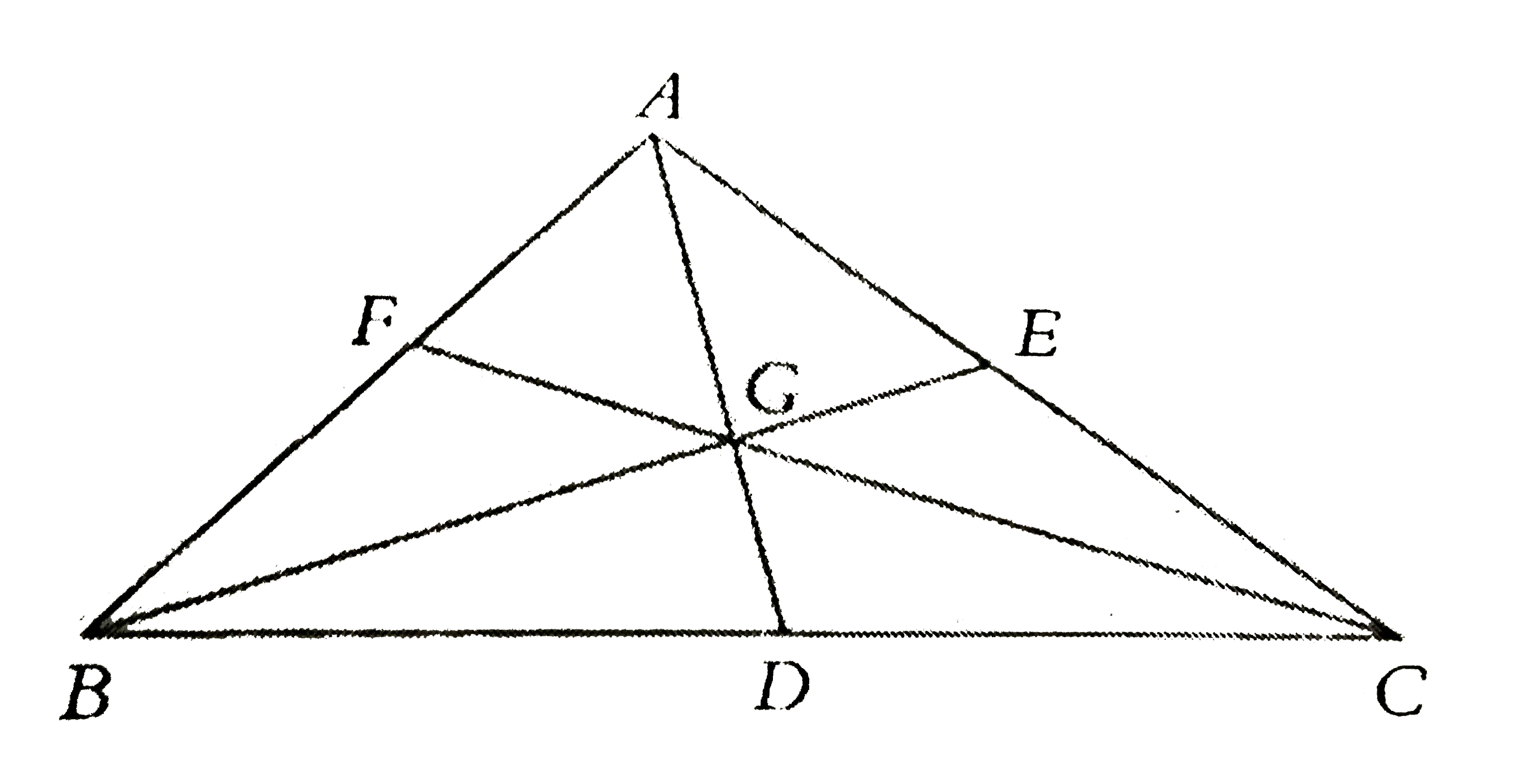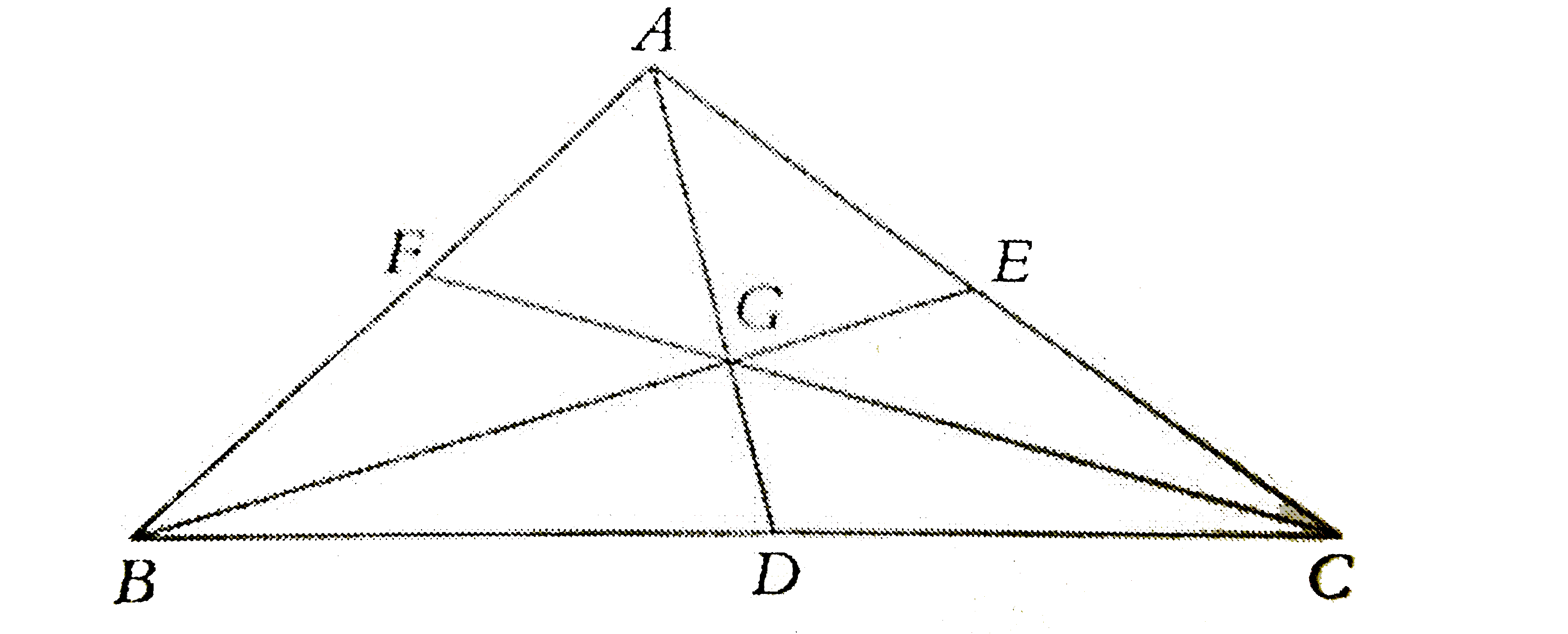In a ΔABC,AD,BE and CF are three medians. The perimeter of ΔABC is always.
equal to (¯¯¯¯¯¯AB+¯¯¯¯¯¯BE+¯¯¯¯¯¯CF)
greater than (¯¯¯¯¯¯AD+¯¯¯¯¯¯BE+¯¯¯¯¯¯CF)
less than (¯¯¯¯¯¯AD+¯¯¯¯¯¯BE+¯¯¯¯¯¯CF)
None of these
The correct Answer is:B
To find the relationship between the perimeter of triangle ABC and the lengths of its medians AD, BE, and CF, we can follow these steps:
Step 1: Understand the Medians
In triangle ABC, the medians AD, BE, and CF are the segments that connect each vertex of the triangle to the midpoint of the opposite side.
Step 2: Define the Perimeter
The perimeter of triangle ABC is defined as the sum of the lengths of its sides:
P=AB+BC+CA
Step 3: Use the Median Length Formula
The length of a median can be calculated using the formula:
ma=12√2b2+2c2−a2
where ma is the median from vertex A to side BC, and a,b,c are the lengths of sides opposite to vertices A, B, and C respectively.
Step 4: Establish Relationships
Using the triangle inequality, we know that the sum of the lengths of any two sides of a triangle is greater than the length of the third side. Therefore:
1. AB+AC>BC
2. AB+BC>AC
3. AC+BC>AB
Step 5: Relate Medians to Sides
For any triangle, it is known that:
- AB+AC>2AD
- AB+BC>2BE
- AC+BC>2CF
Step 6: Combine the Inequalities
Adding the above inequalities gives:
(AB+AC)+(AB+BC)+(AC+BC)>2(AD+BE+CF)
This simplifies to:
2(AB+AC+BC)>2(AD+BE+CF)
Step 7: Divide by 2
Dividing both sides by 2, we get:
AB+AC+BC>AD+BE+CF
Conclusion
Thus, the perimeter of triangle ABC is always greater than the sum of its medians:
P>AD+BE+CF
In triangle ABC, the medians AD, BE, and CF are the segments that connect each vertex of the triangle to the midpoint of the opposite side.
The perimeter of triangle ABC is defined as the sum of the lengths of its sides:
P=AB+BC+CA
The length of a median can be calculated using the formula:
ma=12√2b2+2c2−a2
where ma is the median from vertex A to side BC, and a,b,c are the lengths of sides opposite to vertices A, B, and C respectively.
Using the triangle inequality, we know that the sum of the lengths of any two sides of a triangle is greater than the length of the third side. Therefore:
1. AB+AC>BC
2. AB+BC>AC
3. AC+BC>AB
For any triangle, it is known that:
- AB+AC>2AD
- AB+BC>2BE
- AC+BC>2CF
Adding the above inequalities gives:
(AB+AC)+(AB+BC)+(AC+BC)>2(AD+BE+CF)
This simplifies to:
2(AB+AC+BC)>2(AD+BE+CF)
Dividing both sides by 2, we get:
AB+AC+BC>AD+BE+CF
Thus, the perimeter of triangle ABC is always greater than the sum of its medians:
P>AD+BE+CF
Similar Questions
Knowledge Check
- Question 1 - Select One
In triangle ABC, AD, BE and CF are the medians intersecting at point G and area of triangle ABC is 156cm2. What is the area (in cm2) of triangle FGE ?
A13B26C39D52 - Question 2 - Select One
If O is the centroid and AD, BE and CF are the three medians of ΔABC with an area of 96cm2 then the area of ΔBOD in cm2 is
A8B12C16D24 - Question 3 - Select One
If in a triangle ABC, BE and CF are two medians perpendicular to each other and if AB=19 cm and AC=22cm then the length of BC is
A19.5 cmB26 cmC20.5 cmD13 cm
If in a ΔABC,AD,BEandCF are the altitudes and R is the circumradius, then the radius of the circumcircle of ΔDEF is
View SolutionIf in a ΔABC,AD,BEandCF are the altitudes and R is the circumradius, then find the radius of the DEF.
View SolutionAD,BEandCF are the perpendiculars from the angular points of a ΔABC upon the opposite sides. The perimeters of the ΔDEFandΔABC are in the ratio-
View SolutionIf ΔABC ~ ΔPQR, then evaluate the length of AC, if perimeter of ΔABC = 20 cm, perimeter of ΔPQR = 40 cm and PR= 8 cm.
View SolutionThree medians AD, BE and CF of ΔABC intersect at G. The area of ΔABC is 36 sq. cm. Then the area of ΔCGE is
View Solution



